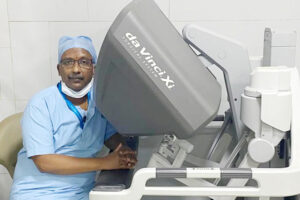Patients Dilemma: How to Choose the Right Treatment?

Patients Dilemma: How to Choose the Right Treatment?
Over the past few decades, medical technology has advanced significantly. Not only are these modern technology accessible in our nation’s many private hospitals, but they are also getting more inexpensive. The patient has a very tough time selecting the best course of treatment due to the availability. especially with the treatment of cancer. After receiving a cancer diagnosis, patients are in total shock. The patient begins to look for the finest treatment possible. Google search, social networking, and online advertising all contribute to the misunderstanding.
How do I make my decision?
Choose your surgeon based on –
- Personal decision
- Family doctor can guide you
- Check doctors accredited credentials/training( not all fellowships are accredited)
- Urologist experience
- Hospital in which the urologist is practicing
- Communication skills of the urologist
- Doctors’ reviews
- At times gender need to be considered
There are many innovative technologies available right now. There isn’t a single treatment that works best for everyone; it depends on the patient and the nature of the illness.
New technology does not mean best technology. Say for instant Laser prostate is advertised as best for prostate. If you read carefully between the lines it is only recommended in patients with huge prostates weighing more than 100 grams.
Recent social media advertisement for laser circumcision is another example. There is no advantage in performing circumcision with laser it only adds to the cost.
I came across social media advertisement for prostate artery embolization for benign prostate enlargement. Prostate artery embolization is not recommended treatment for prostate gland enlargement in any urology guidelines.
Robotics is one of the new technologies on the market now. Robots have aided doctors in performing complex procedures with minimum morbidity and allowing patients to recuperate fast after major operations. Unfortunately, the cost has not decreased significantly over time.
From ads and promotions in the media, patients think that robotic surgery is the best way to treat cancer and that it can cure all types of cancer. Robotics is in fact one of the technologies. Most of it can be done through laparoscopic surgery, which is much less expensive. Robotic surgery is only done when it is necessary, and not all patients need it.
Most patients also can’t afford it. It is also waste of available resources. If your diagnosis of cancer is confirmed following surgery some of them may need further treatment with radiotherapy or chemotherapy. Saving some money after surgery will be helpful in these scenarios.
The goal of treating cancer is to produce the best oncological result possible. This can be done with either open surgery, laparoscopic surgery, or robotic surgery. Each has its pros and cons. The decision is completely based on what the patient wants, how complicated the procedure is, and the patients’ affordability. There is no single strategy that works for everyone.
One tool that could be used to reach the goal is a robot. However, it should be noted that a robot alone won’t make the oncological outcome better. It depends on the patient, the doctor, and the stage of the cancer. This niche technology has a place in complex urological procedures, like when a kidney tumour is close to a major blood vessel or when a patient with a high BMI and a complicated pelvic structure. The good news is that some health insurance companies have agreed to cover robotic surgery. Robotic surgery is here to stay, and as new robotic systems come out, costs should go down.







